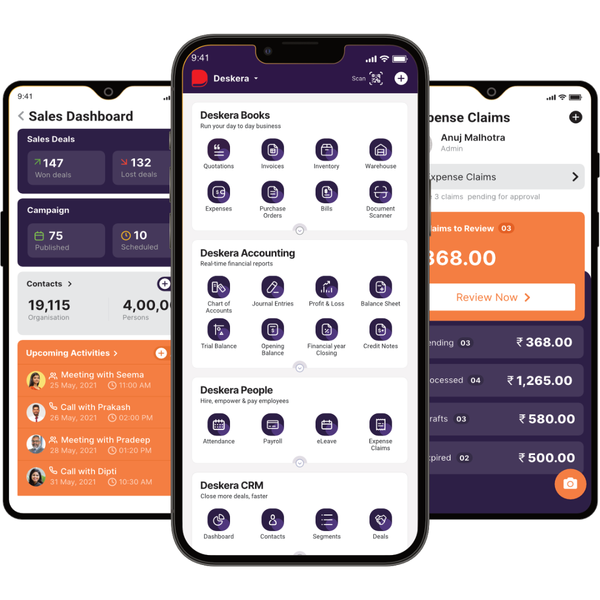In the dynamic landscape of modern business, effective demand forecasting reigns as the ultimate compass, guiding companies to navigate the stormy seas of uncertainty with clarity and purpose.

Like a powerful oracle, it unravels the enigmatic threads of market trends, customer preferences, and economic shifts, granting organizations the foresight they need to optimize inventory, production, and resources.
Embracing this indispensable tool ensures that businesses stay one step ahead, anticipate fluctuations, and meet customer demands with unparalleled precision, ultimately transforming challenges into triumphs and propelling them toward sustained success. Embrace the magic of demand forecasting, and unlock the path to prosperity in an ever-evolving world.
This article covers the following:
- Data Quality and Quantity
- Advanced Analytics Tools
- Cross-Functional Collaboration
- Market Research and Trend Analysis
- Historical Data Analysis
- Customer Segmentation
- Demand Shaping Strategies
- Real-Time Data Updates
- Scenario Analysis and Sensitivity Testing
- Key Performance Indicators (KPIs) Monitoring
- Continuous Model Refinement
- Executive Buy-In and Support
- Forecasting Model Documentation
- Training and Skill Development
- Review and Auditing
Data Quality and Quantity
Data quality and quantity are crucial factors in effective demand forecasting. Accurate demand forecasting is essential for businesses to make informed decisions about production, inventory management, resource allocation, and overall strategy. Let's explore the importance of both data quality and data quantity in this process:
- Accurate predictions: High-quality data ensures that the forecasts generated are reliable and trustworthy. If the data is inaccurate, incomplete, or inconsistent, the forecasted demand will be flawed, leading to poor decision-making.
- Understanding customer behavior: Quality data helps businesses gain a comprehensive understanding of customer preferences, buying patterns, and trends. This insight is vital in anticipating changes in demand and adapting strategies accordingly.
- Reduction of errors and waste: Reliable data minimizes errors in forecasting, leading to better inventory management and reducing the risk of overstocking or understocking products. This helps businesses optimize their resources and reduce waste.
- Increased customer satisfaction: Understanding customer needs and accurately forecasting demand enables businesses to ensure that products and services are readily available when customers want them. This boosts customer satisfaction and loyalty.
- Data Quantity:
- Statistical significance: Larger datasets provide a more statistically significant basis for analysis, enabling more accurate predictions. With more data points, patterns, and trends become clearer, resulting in more reliable forecasts.
- Seasonal variations and trends: Having a substantial amount of historical data allows businesses to identify seasonal patterns and long-term trends, making it easier to predict fluctuations in demand and plan accordingly.
- Handling uncertainties: More data allows forecasting models to account for variations and uncertainties in the market. This improves the resilience of businesses in the face of unforeseen events or changes in customer behavior.
- Support for advanced forecasting techniques: Complex forecasting methods, such as machine learning algorithms, require large datasets to train models effectively. With more data, these techniques can yield more accurate predictions.
In conclusion, the importance of data quality and quantity in effective demand forecasting cannot be overstated. High-quality data ensures accurate predictions and better decision-making, while a sufficient quantity of data allows for more robust analysis and improved forecasting models.
Businesses that prioritize data accuracy and collect a substantial amount of relevant data are better positioned to meet customer demands, optimize their operations, and stay competitive in a dynamic market environment.
Advanced Analytics Tools
Advanced analytics tools play a crucial role in effective demand forecasting for various reasons:
- Accurate Predictions: Demand forecasting involves analyzing historical data and identifying patterns and trends to predict future demand. Advanced analytics tools, such as machine learning algorithms and predictive models, can process large volumes of data and identify complex patterns that traditional methods might miss. This leads to more accurate predictions, enabling businesses to make better-informed decisions.
- Real-time Data Processing: With advanced analytics tools, businesses can analyze real-time data, which allows them to respond quickly to changing market dynamics and customer preferences. This agility is vital in industries with rapidly shifting demand patterns.
- Data Integration: Demand forecasting often requires analyzing data from multiple sources, such as sales data, marketing data, social media, and external factors like economic indicators. Advanced analytics tools can integrate diverse datasets seamlessly, providing a comprehensive view of the factors influencing demand.
- Forecasting at a Granular Level: Advanced analytics tools can perform demand forecasting at various levels, from high-level market demand to specific product categories or individual SKU-level demand. This granularity allows businesses to optimize inventory management, production planning, and marketing strategies.
- Identifying Seasonal and Cyclical Patterns: Seasonality and cyclicality in demand patterns can significantly impact forecasting accuracy. Advanced analytics tools can automatically identify and account for these patterns, leading to more precise predictions and better inventory management.
- Customer Segmentation: Understanding different customer segments and their unique demand patterns is essential for targeted marketing and inventory management. Advanced analytics can segment customers based on their behavior, preferences, and buying habits, helping businesses tailor their strategies accordingly.
- Scenario Analysis: Advanced analytics tools enable businesses to conduct scenario analysis, allowing them to simulate the impact of various factors on demand. By exploring "what-if" scenarios, businesses can develop contingency plans and be better prepared for unexpected events.
- Reducing Forecasting Errors: Traditional forecasting methods often suffer from inherent biases and errors. Advanced analytics tools help minimize these errors by using data-driven approaches and constantly learning from new data.
- Supply Chain Optimization: Effective demand forecasting is essential for optimizing the supply chain. By accurately predicting demand, businesses can optimize inventory levels, reduce stockouts, and minimize excess inventory, leading to cost savings and improved efficiency.
- Competitive Advantage: Embracing advanced analytics tools for demand forecasting can provide a competitive advantage. Businesses that can accurately predict demand and adapt to market changes quickly are better positioned to meet customer needs, reduce costs, and gain a competitive edge.
Cross-Functional Collaboration
Cross-functional collaboration is essential for effective demand forecasting for several reasons:
- Access to Diverse Perspectives: Different departments within an organization possess unique insights and knowledge about the market, customers, and internal operations. Cross-functional collaboration allows these diverse perspectives to come together, leading to a more comprehensive and accurate demand forecast.
- Holistic Data Integration: Demand forecasting requires data from various sources, including sales, marketing, finance, supply chain, and customer feedback. Collaborating across functions enables seamless integration of these data sets, making the forecasting process more reliable and data-driven.
- Improved Forecast Accuracy: By involving different stakeholders, you can minimize biases and blind spots that may exist in individual departments' forecasts. Collaborative forecasting can lead to more accurate predictions, reducing the risk of overstocking or stockouts.
- Enhanced Understanding of Customer Behavior: Marketing and sales teams often have direct interactions with customers. Sharing their insights with other functions can provide a deeper understanding of customer behavior, preferences, and trends, which are crucial inputs for demand forecasting.
- Optimized Inventory Management: With better demand forecasts, supply chain, and inventory management can be optimized. This results in reduced carrying costs, lower inventory levels, and more efficient operations.
- Agile Decision-Making: Demand forecasting is not a one-time process; it requires constant adjustments to adapt to changing market conditions. Collaborating across functions allows organizations to respond quickly to market shifts, making agile and informed decisions.
- Resource Allocation and Planning: Accurate demand forecasts help organizations allocate resources effectively. This includes planning production schedules, workforce management, and raw material procurement.
- Risk Mitigation: Collaboration helps identify and address potential risks and challenges in meeting customer demands. By understanding the forecast from multiple angles, organizations can develop contingency plans and risk mitigation strategies.
- Alignment of Business Objectives: When various functions work together towards a common goal – in this case, accurate demand forecasting – it fosters alignment among teams and encourages a shared sense of responsibility for business outcomes.
- Continuous Improvement: Cross-functional collaboration allows organizations to learn from past forecasting experiences, both successes and failures. By sharing knowledge and best practices, the forecasting process can be continuously improved over time.
In summary, demand forecasting benefits significantly from cross-functional collaboration as it harnesses the collective knowledge and expertise within an organization, leading to more accurate predictions, better resource allocation, and improved overall decision-making.
Market Research and Trend Analysis
Market research and trend analysis are crucial components of effective demand forecasting for several reasons:
- Understanding customer preferences and needs: Market research helps businesses gain insights into consumer behavior, preferences, and needs. By understanding what drives consumer purchasing decisions, companies can tailor their products and services to meet these demands accurately.
- Identifying market trends: Trend analysis allows businesses to identify patterns in market behavior over time. Recognizing emerging trends helps companies stay ahead of the competition by adjusting their offerings to align with the evolving market demands.
- Forecasting future demand: By analyzing historical data and current market trends, businesses can make more accurate predictions about future demand for their products or services. This enables them to plan production, inventory, and marketing strategies accordingly, avoiding overproduction or stockouts.
- Mitigating risks and uncertainties: Demand forecasting based on market research and trend analysis helps organizations anticipate potential fluctuations in demand. This allows them to be better prepared for changing market conditions, economic downturns, or unexpected events that could impact sales.
- Making informed business decisions: Reliable demand forecasting provides decision-makers with data-driven insights. It enables them to allocate resources effectively, optimize pricing strategies, manage supply chains efficiently, and invest wisely in product development or marketing campaigns.
- Efficient resource allocation: Accurate demand forecasting ensures that resources, such as raw materials, labor, and production capacity, are utilized optimally. This prevents unnecessary costs and wastage, leading to improved profitability.
- Improving customer satisfaction: Understanding market trends and consumer preferences enables businesses to offer products and services that better align with customer expectations. Satisfied customers are more likely to become repeat buyers and advocates for the brand.
- Facilitating strategic planning: Market research and trend analysis are essential for formulating long-term business strategies. Organizations can identify growth opportunities, diversify product portfolios, or enter new markets based on the insights obtained from these analyses.
- Enhancing competitiveness: Staying informed about market trends and consumer behavior allows businesses to remain competitive. By continuously adapting their offerings to match changing demands, companies can maintain relevance and stay ahead in the market.
In summary, market research and trend analysis are vital components of effective demand forecasting. They provide businesses with valuable information about customers, markets, and future demand, empowering them to make informed decisions, mitigate risks, and drive sustainable growth.
Historical Data Analysis
Historical data analysis plays a crucial role in demand forecasting for various reasons. By examining past data, organizations can make more informed decisions about future demand, leading to better planning, resource allocation, and improved overall business performance. Here are some key reasons why historical data analysis is important in demand forecasting:
- Pattern Identification: Historical data allows businesses to identify recurring patterns, trends, and seasonal fluctuations in demand. Understanding these patterns helps forecasters adjust their predictions accordingly, ensuring optimal inventory levels and preventing stockouts or overstocking.
- Accuracy Improvement: Analyzing historical data enables organizations to refine their forecasting models and algorithms continually. As forecasting models learn from past successes and failures, their accuracy improves over time, making future predictions more reliable.
- Seasonal Adjustments: Many industries experience seasonality in demand, driven by factors like holidays, weather, or cultural events. Historical data analysis enables businesses to adjust their forecasts to account for these recurring patterns, leading to more accurate predictions during peak and off-peak periods.
- Market Behavior Insights: By studying historical data, companies gain insights into the impact of various factors on demand, such as marketing campaigns, pricing changes, economic conditions, or competitor actions. This knowledge allows them to adapt their strategies to meet changing market conditions effectively.
- Long-Term Planning: Historical data analysis aids in long-term planning and budgeting. By understanding historical demand patterns and trends, organizations can allocate resources efficiently and make strategic decisions about production capacity, workforce planning, and capital investment.
- Inventory Management: Accurate demand forecasting based on historical data minimizes inventory carrying costs while ensuring sufficient stock to meet customer demands promptly. This optimizes inventory levels, reduces waste, and frees up capital for other business needs.
- Supply Chain Optimization: Historical data analysis also impacts supply chain management. When businesses can anticipate demand accurately, they can plan their supply chain activities more effectively, improving efficiency and reducing lead times.
- Risk Mitigation: Understanding historical demand patterns helps identify potential risks and vulnerabilities in the supply chain or market. Armed with this knowledge, companies can implement contingency plans and risk mitigation strategies to minimize disruptions to their operations.
- Financial Planning and Budgeting: Accurate demand forecasting based on historical data supports better financial planning and budgeting. It helps companies allocate funds appropriately and make well-informed decisions about investments, cost controls, and profit projections.
- Customer Service Improvement: By analyzing historical data, businesses can better understand customer preferences and purchasing behaviors. This insight enables them to tailor their products, services, and marketing efforts to meet customer needs more effectively, leading to improved customer satisfaction and loyalty.
In summary, historical data analysis is fundamental for demand forecasting as it empowers businesses to make data-driven decisions, optimize operations, and respond proactively to changing market conditions. By learning from the past, organizations can better prepare for the future, reducing risks and maximizing opportunities for growth and success.
Customer Segmentation
Customer segmentation plays a crucial role in demand forecasting for several reasons. Demand forecasting is the process of estimating future customer demand for a product or service, and customer segmentation helps in making this estimation more accurate and actionable. Here are the key reasons why customer segmentation is important in demand forecasting:
- Understanding Diverse Customer Behavior: Different customers have varying needs, preferences, and buying behaviors. By segmenting customers into distinct groups based on common characteristics, such as demographics, geographic location, behavior, or preferences, businesses can gain insights into the unique demands of each segment. This allows them to tailor their forecasting models to account for these variations accurately.
- Accurate Demand Prediction: When forecasting demand for a product or service, one-size-fits-all approaches can be inaccurate. Customer segmentation allows businesses to apply different forecasting techniques to each segment, taking into account their historical purchasing patterns, seasonality, and response to marketing efforts. This granularity leads to more precise predictions for each customer group, resulting in better overall demand forecasting.
- Optimized Inventory Management: Effective demand forecasting is essential for inventory management. By understanding the demands of different customer segments, businesses can stock their inventory based on the specific needs and preferences of each segment. This minimizes excess inventory costs and reduces the risk of stockouts, ensuring a more efficient supply chain.
- Personalized Marketing Strategies: Tailoring marketing strategies to specific customer segments increases their effectiveness. With customer segmentation insights, businesses can create targeted promotional campaigns and product offerings that resonate with the preferences and interests of each segment. This can boost customer engagement, and loyalty, and ultimately drive higher demand for the product or service.
- New Product Development: Customer segmentation helps identify potential market gaps and unmet needs within different customer groups. Understanding these variations allows businesses to develop new products or modify existing ones to better cater to the demands of specific segments, thereby enhancing the success of new product launches.
- Pricing Strategies: Different customer segments may have varying price sensitivities. By segmenting customers, businesses can adopt dynamic pricing strategies, setting prices based on each segment's willingness to pay. This helps maximize revenue and ensures that pricing decisions align with the perceived value of the product or service for each group.
- Risk Management: Customer segmentation aids in risk assessment by providing insights into the stability and reliability of different customer segments. For instance, some segments may be more vulnerable to economic downturns, while others might remain relatively unaffected. This understanding can help businesses prepare for potential fluctuations in demand and manage risks effectively.
In summary, customer segmentation enhances the accuracy and relevance of demand forecasting, leading to improved decision-making, optimized inventory management, personalized marketing strategies, and better overall customer satisfaction. Businesses that effectively leverage customer segmentation in their demand forecasting processes are more likely to stay competitive and achieve sustainable growth in the long run.
Demand Shaping Strategies
Demand-shaping strategies play a crucial role in demand forecasting for several reasons. Demand shaping refers to the proactive actions taken by businesses to influence customer demand for their products or services.
By influencing demand, companies can better align their supply chain, production, and inventory management with anticipated customer needs. Here's why demand-shaping strategies are important in demand forecasting:
- Managing Supply Chain: Demand shaping helps in balancing the supply chain by aligning it with expected demand patterns. Accurate demand forecasting allows businesses to optimize inventory levels, production schedules, and distribution channels, reducing the risk of overstocking or stockouts.
- Resource Allocation: Demand shaping enables the effective allocation of resources, such as raw materials, labor, and machinery. When a company can anticipate demand fluctuations, it can allocate resources more efficiently, minimizing waste and maximizing productivity.
- New Product Introductions: For new product launches, demand shaping becomes essential. By understanding market trends and customer preferences, companies can create effective marketing campaigns and promotions to drive interest and generate demand.
- Pricing and Promotions: Effective demand shaping can guide businesses in determining optimal pricing strategies and promotional activities. For example, if demand is expected to be high during a specific period, the company may choose to introduce special offers or discounts to capitalize on the increased interest.
- Inventory Management: Accurate demand forecasting through demand-shaping strategies can significantly impact inventory management. It helps in maintaining leaner inventories while still meeting customer demands, reducing carrying costs and the risk of obsolete stock.
- Financial Planning: Demand shaping contributes to better financial planning and budgeting. By having a clearer understanding of expected demand, businesses can make informed decisions about investments, capital expenditures, and cash flow management.
- Supply and Demand Alignment: Demand shaping strategies aim to align supply and demand more effectively, ensuring that a company produces the right quantity of products at the right time. This minimizes excess inventory and reduces the need for costly rush production.
- Risk Management: Demand shaping provides valuable insights for risk management. By anticipating demand fluctuations, companies can prepare for potential challenges and uncertainties in the market.
- Customer Satisfaction: Meeting customer demands efficiently leads to higher customer satisfaction levels. When customers can find products when they need them, they are more likely to remain loyal to the brand.
- Competitive Advantage: Companies that employ effective demand-shaping strategies gain a competitive edge. They can respond proactively to market changes and customer preferences, outperforming competitors who rely solely on reactive approaches.
Overall, demand-shaping strategies are essential for businesses to thrive in dynamic markets. By accurately forecasting demand and proactively influencing it, companies can optimize their operations, improve customer satisfaction, and achieve a more stable and sustainable business model.
Real-Time Data Updates:
Real-time data updates play a crucial role in effective demand forecasting for various reasons. Demand forecasting involves predicting customer demand for products or services, and having access to real-time data provides significant advantages over using static or outdated information. Here are some key reasons why real-time data updates are important in demand forecasting:
- Accurate and Up-to-Date Information: Real-time data ensures that the demand forecast is based on the most current and accurate information available. Customer preferences, market trends, and other external factors can change rapidly, and using outdated data may lead to inaccurate predictions, potentially resulting in stockouts or excess inventory.
- Responsiveness to Dynamic Market Conditions: Markets are often influenced by factors such as seasonality, promotions, and unexpected events. Real-time data allows businesses to adapt their demand forecasting models quickly to respond to these dynamic market conditions and adjust inventory levels or production schedules accordingly.
- Improved Supply Chain Management: Accurate demand forecasts are critical for efficient supply chain management. Real-time data enables better coordination between suppliers, manufacturers, and retailers, helping to optimize inventory levels, reduce lead times, and minimize operational costs.
- Enhanced Customer Service: Demand forecasting helps businesses meet customer demand efficiently. Real-time data ensures that products are available when customers need them, improving customer satisfaction and loyalty. Conversely, inaccurate forecasts can lead to stockouts, dissatisfied customers, and potential loss of sales.
- Inventory Optimization: Having real-time data allows businesses to optimize inventory levels based on current demand patterns. Overstocking ties up capital and increases carrying costs, while understocking leads to lost sales. Real-time data helps strike the right balance and reduces inventory holding costs.
- Competitive Advantage: Companies that can leverage real-time data effectively have a competitive advantage over their rivals. The ability to make quick, data-driven decisions enables businesses to respond swiftly to market changes and better capitalize on emerging opportunities.
- Demand Sensing: Real-time data enables demand sensing, which involves capturing immediate changes in customer demand signals. This approach can help detect shifts in customer behavior, enabling businesses to adjust their forecasts in real time and make data-driven decisions to meet changing demand patterns.
- Risk Mitigation: Demand forecasting based on real-time data also aids in risk mitigation. By identifying potential supply chain disruptions or changes in demand early on, businesses can take proactive measures to minimize the impact on operations and profitability.
In summary, real-time data updates are essential for effective demand forecasting because they provide accurate, up-to-date information, enable responsiveness to dynamic market conditions, improve supply chain management, enhance customer service, optimize inventory levels, offer a competitive advantage, facilitate demand sensing, and aid in risk mitigation.
Leveraging real-time data allows businesses to make more informed decisions, ultimately leading to better operational efficiency and increased customer satisfaction.
Scenario Analysis and Sensitivity Testing
Scenario analysis and sensitivity testing play crucial roles in effective demand forecasting as they help businesses and organizations make informed decisions in uncertain and dynamic environments.
These techniques allow for a more comprehensive understanding of potential outcomes and risks associated with different scenarios, enabling better preparedness and planning. Here's why they are important:
- Risk Management: Demand forecasting involves making predictions about future market conditions, consumer behavior, and other variables that can be influenced by various internal and external factors. Scenario analysis helps identify potential risks and uncertainties by considering multiple possible scenarios. By understanding the range of potential outcomes, businesses can develop risk management strategies to mitigate negative impacts and capitalize on opportunities.
- Decision Making: Sensitivity testing allows businesses to assess how changes in key variables affect their forecasts. By testing different assumptions, such as price changes, economic conditions, or competitor actions, decision-makers can gauge the impact on demand. This helps in making well-informed decisions and choosing the best course of action, especially when faced with multiple alternatives.
- Contingency Planning: Scenario analysis enables organizations to develop contingency plans based on different hypothetical situations. These plans can be quickly implemented if specific scenarios unfold, allowing businesses to respond swiftly and efficiently to changing market conditions.
- Resource Allocation: Effective demand forecasting relies on the allocation of resources, such as inventory, production capacity, and manpower. By conducting scenario analysis and sensitivity testing, businesses can determine the most efficient allocation of resources to meet potential changes in demand patterns. This helps in optimizing inventory levels and avoiding over/under-production.
- Strategic Planning: Scenario analysis and sensitivity testing help in long-term strategic planning. By considering various possible future outcomes, organizations can identify emerging trends and opportunities, as well as potential threats. This aids in the formulation of robust and adaptable strategies that can withstand different market conditions.
- Communication and Stakeholder Management: Scenario analysis provides a clear and visual way to communicate complex forecasting data to stakeholders. It helps stakeholders understand the uncertainties and potential risks, fostering more realistic expectations and fostering a collaborative approach in decision-making.
- Performance Evaluation: After implementing a demand forecasting strategy, sensitivity testing allows businesses to compare actual performance against forecasted scenarios. This evaluation enables companies to refine their forecasting models, learn from past experiences, and improve their future predictions.
In summary, scenario analysis and sensitivity testing are indispensable tools in effective demand forecasting as they enable businesses to proactively respond to potential challenges, develop robust strategies, and make better-informed decisions in an ever-changing business landscape. These techniques provide valuable insights into the range of possibilities, allowing organizations to stay agile and adaptive in their approach.
Key Performance Indicators (KPIs) Monitoring
Key Performance Indicators (KPIs) monitoring is crucial in effective demand forecasting for several reasons. Demand forecasting involves predicting future customer demand for products or services to ensure that a business can meet its customers' needs efficiently and avoid stockouts or excess inventory.
KPIs play a vital role in this process by providing valuable insights into the performance and health of the business, which directly impacts demand forecasting accuracy and overall operational efficiency. Here are some reasons why KPI monitoring is important in demand forecasting:
Accuracy Improvement: KPIs provide real-time data on various aspects of the business, such as sales, customer behavior, inventory levels, and production performance. Analyzing these KPIs allows businesses to fine-tune their forecasting models and make more accurate predictions about future demand.
Demand Variability Analysis: Demand can fluctuate due to various factors, including seasonality, economic conditions, and changing customer preferences. By monitoring relevant KPIs, businesses can identify patterns and trends in demand variability, helping them adjust their forecasting strategies accordingly.
Supply Chain Optimization: KPIs related to supply chain performance, such as lead times, order fulfillment rates, and transportation efficiency, enable businesses to optimize their supply chain processes. When the supply chain operates efficiently, it positively impacts demand forecasting by ensuring the timely availability of products.
Inventory Management: Inventory carrying costs can be significant for businesses. By tracking KPIs like inventory turnover rate, stockout rates, and excess inventory levels, companies can optimize their inventory management processes. This, in turn, helps avoid stockouts and overstocking issues, which are critical for accurate demand forecasting.
Demand Planning: KPI monitoring aids in effective demand planning, enabling businesses to allocate resources more efficiently and make informed decisions about production schedules, procurement, and workforce management.
Customer Relationship Management: KPIs related to customer satisfaction, retention rates, and sales performance help businesses understand their customers better. A deeper understanding of customers' needs and preferences contributes to more precise demand forecasting.
Budgeting and Financial Planning: Demand forecasting impacts financial planning and budgeting decisions. KPI monitoring allows businesses to align their financial resources with expected demand, reducing the risk of overspending or underinvesting.
Risk Mitigation: Unforeseen events or market disruptions can significantly impact demand. Monitoring relevant KPIs helps businesses identify potential risks and develop contingency plans to mitigate the impact on demand forecasting.
Competitive Advantage: Accurate demand forecasting enables businesses to respond quickly to changing market conditions and outperform competitors. Monitoring KPIs gives companies a competitive edge by facilitating data-driven decision-making.
In summary, KPI monitoring is a vital component of effective demand forecasting as it provides the necessary data and insights to optimize business processes, enhance customer satisfaction, improve inventory management, and ultimately make more informed and precise predictions about future demand.
Continuous Model Refinement:
Continuous model refinement is of significant importance in effective demand forecasting for several reasons:
- Accuracy Improvement: Demand forecasting models are based on historical data and assumptions about future trends. However, real-world demand patterns can be dynamic and subject to change.
Continuous model refinement allows organizations to adapt to changing market conditions, consumer behavior, and external factors, leading to more accurate predictions.
- Reacting to Market Shifts: Markets can experience sudden shifts due to economic changes, new competitors, technological advancements, or unexpected events (e.g., pandemics).
By continuously refining the demand forecasting model, businesses can quickly respond to these shifts and make informed decisions to optimize inventory levels, production schedules, and resource allocation.
- Reducing Forecast Errors: No forecasting model is perfect, and there will always be forecast errors. Continuous model refinement helps identify and reduce these errors over time. By analyzing past forecasting inaccuracies and learning from them, organizations can make their models more robust and reliable.
- Optimizing Resource Allocation: Accurate demand forecasting is crucial for efficient resource allocation. Whether it's raw materials, labor, or distribution capacity, companies need to allocate resources optimally to meet customer demand without overstocking or creating shortages. Continuous model refinement ensures that resource allocation strategies remain up-to-date and aligned with actual demand patterns.
- Enhancing Decision-Making: Demand forecasting plays a vital role in various business decisions, including production planning, inventory management, and marketing strategies.
Continuous refinement of the forecasting model provides decision-makers with timely and relevant insights, supporting better-informed choices and improved business outcomes.
- Customer Satisfaction and Retention: A well-refined demand forecasting model can lead to improved customer satisfaction. By accurately predicting customer demand and ensuring product availability, businesses can meet customer expectations and avoid stockouts, thus fostering loyalty and retention.
- Cost Reduction: Inaccurate demand forecasting can result in unnecessary costs, such as overproduction or expedited shipping to cover stockouts. Continuously refining the forecasting model helps reduce such costs by minimizing inefficiencies and improving overall supply chain management.
- Risk Mitigation: Businesses face various risks, such as market volatility, supplier disruptions, or natural disasters. By continuously updating the demand forecasting model, organizations can identify potential risks early on and develop contingency plans to mitigate their impact.
- Innovation and Adaptation: A continuously refined demand forecasting model promotes a culture of innovation and adaptation within the organization. By embracing the data-driven approach to demand forecasting, businesses can identify new opportunities and tailor their strategies to meet changing customer needs.
- Competitive Advantage: In today's fast-paced and competitive business environment, having an accurate and refined demand forecasting model can be a source of competitive advantage. It enables companies to make proactive decisions, anticipate market trends, and stay ahead of their competitors.
In conclusion, continuous model refinement in demand forecasting is not just a one-time process but an ongoing journey of learning, adaptation, and improvement. By regularly updating the forecasting model based on new data and insights, businesses can enhance their ability to make informed decisions, optimize operations, and stay resilient in a dynamic marketplace.
Executive Buy-In and Support:
- Resource Allocation: Demand forecasting often requires dedicated resources, both financial and human. Without executive buy-in, it can be challenging to secure the necessary budget and personnel to implement and maintain an effective forecasting process.
Executives who support demand forecasting initiatives are more likely to allocate the required resources, enabling the forecasting team to operate efficiently and deliver accurate results.
- Cross-Functional Collaboration: Demand forecasting involves multiple departments within an organization, including sales, marketing, operations, finance, and supply chain.
When executives endorse and support forecasting efforts, it promotes collaboration and cooperation among these teams. It aligns everyone toward a common goal, leading to better data sharing, increased transparency, and more accurate forecasts.
- Data Accessibility and Integration: Obtaining relevant data from different departments can be a challenge if executives don't prioritize data sharing and integration.
Executive support can help break down data silos and encourage the use of integrated systems that facilitate the flow of information required for forecasting. Having access to comprehensive data improves the accuracy and reliability of demand forecasts.
- Decision-Making and Planning: Demand forecasts are used as a basis for critical business decisions and planning, such as production scheduling, inventory management, and resource allocation.
When executives are on board with the forecasting process, they are more likely to trust and rely on the forecasts for strategic decision-making. This alignment between forecasting and decision-making leads to better business outcomes.
- Organizational Alignment: Forecasting is not just a technical exercise; it impacts the entire organization's operations and performance. Executive buy-in ensures that the importance of demand forecasting is communicated throughout the company. It helps create a culture that values data-driven insights and encourages teams to use forecasts to make informed decisions at all levels.
- Long-term Vision: Demand forecasting is essential for both short-term and long-term planning. Executives who recognize the value of forecasting can integrate it into the company's long-term strategy.
This allows the organization to be proactive in responding to market trends, customer demands, and industry changes, helping them stay ahead of the competition.
- Accountability and Performance Evaluation: When executives are committed to the forecasting process, they are more likely to hold their teams accountable for forecast accuracy and performance. This accountability drives continuous improvement in forecasting techniques and processes, leading to better results over time.
In conclusion, executive buy-in and support are pivotal in establishing a successful demand forecasting function within an organization. It ensures that the forecasting team has the necessary resources, data, and collaboration to produce accurate and actionable forecasts.
Moreover, it fosters a data-driven culture and enables the organization to make well-informed decisions, ultimately leading to improved operational efficiency and business performance.
Forecasting Model Documentation:
Forecasting Model Documentation is crucial for effective demand forecasting for several reasons:
- Transparency and Reproducibility: Proper documentation allows others (and even the same analyst in the future) to understand how the forecasting model works, the underlying assumptions, and the data used. This transparency ensures that the forecasting process is reproducible, and others can validate or replicate the results independently.
- Knowledge Transfer and Continuity: In organizations, turnover, and team changes are common. When a forecasting model is well-documented, it facilitates knowledge transfer from one team member to another, ensuring continuity in the forecasting process and preventing disruptions.
- Error Identification and Debugging: Documentation helps in identifying errors and issues in the forecasting model. If the model produces unexpected results, the documentation can serve as a reference to pinpoint potential mistakes in the model or data.
- Model Improvements and Iterations: Documenting the forecasting model allows analysts to track its performance over time and make improvements iteratively. Understanding past model versions and their outcomes helps in making informed decisions to enhance forecasting accuracy.
- Audit and Compliance: In some industries or regulatory environments, accurate demand forecasting is critical. Proper documentation provides a clear audit trail, demonstrating that the forecasting process adheres to established guidelines and complies with relevant regulations.
- Communication and Collaboration: When a forecasting model is documented, it becomes easier to communicate its results and insights to stakeholders, decision-makers, or other teams within the organization. A well-documented model facilitates collaboration and alignment across different departments.
- Facilitating Model Selection: In situations where multiple forecasting models or techniques are available, documentation helps in comparing and selecting the most appropriate model based on past performance and suitability for the specific forecasting task.
- Training and Education: Documentation serves as a valuable resource for training new team members or educating stakeholders about the forecasting process, ensuring a consistent understanding of the methodology and assumptions.
- Risk Management: Effective demand forecasting helps in managing inventory, resources, and production planning. Documentation helps identify and manage the risks associated with inaccurate forecasts, ensuring better decision-making and resource allocation.
In summary, documenting the forecasting model is not just a bureaucratic task; it is a critical aspect of the demand forecasting process. It enhances transparency, collaboration, and understanding, leading to more reliable and accurate forecasts, which, in turn, can significantly impact the success of a business or organization.
Review and Auditing:
Review and auditing play a crucial role in ensuring the accuracy and effectiveness of demand forecasting for a business or organization. Demand forecasting is the process of estimating future customer demand for products or services, and it serves as a foundation for various important business decisions. Here's why review and auditing are essential in this context:
- Accurate Data Verification: Demand forecasting relies heavily on historical sales data, market trends, and other relevant information. Reviewing and auditing this data helps verify its accuracy and integrity.
Incorrect or outdated data can lead to inaccurate forecasts, potentially causing significant problems like overstocking or stockouts, which can negatively impact profitability and customer satisfaction.
- Model Validation and Improvement: Many businesses use statistical models and algorithms for demand forecasting. Auditing these models helps verify their appropriateness and effectiveness in predicting demand. It allows organizations to fine-tune or replace models that may not be performing well, ensuring that the forecasting process produces reliable results.
- Identifying Biases and Assumptions: Forecasting is often influenced by inherent biases or assumptions in the data or model. A thorough review and audit process can help identify and mitigate these biases, leading to more objective and unbiased predictions.
- Assessing Forecast Accuracy: Regularly reviewing forecast accuracy against actual demand is crucial. By comparing forecasted values with real-world data, businesses can evaluate the effectiveness of their forecasting methods. This analysis helps refine the forecasting approach and makes it more reliable over time.
- Risk Management: Inaccurate demand forecasts can lead to costly errors in supply chain management and inventory planning. Reviewing and auditing demand forecasts enable businesses to identify potential risks and take appropriate measures to manage them effectively. This can include strategies like safety stock levels and agile supply chain practices.
- Financial Planning and Budgeting: Accurate demand forecasting is essential for financial planning and budgeting. Organizations can align their resources, production capacities, and marketing efforts based on forecasted demand. This, in turn, leads to better financial decision-making and resource allocation.
- Strategic Decision Making: Demand forecasting has a significant impact on overall business strategy. It influences decisions related to product development, marketing, pricing, and expansion plans. A robust review and auditing process helps ensure that strategic choices are well-informed and aligned with market realities.
- Customer Satisfaction and Retention: Meeting customer demand is crucial for retaining existing customers and attracting new ones. By improving demand forecasting accuracy, businesses can optimize their inventory levels, reduce stockouts, and provide a more consistent customer experience, leading to higher satisfaction and loyalty.
In summary, review and auditing are essential components of effective demand forecasting. They help businesses ensure data accuracy, model reliability, and strategic alignment, enabling better decision-making, risk management, and ultimately, improved performance in the marketplace.
By incorporating these essential ingredients into your demand forecasting model, you can enhance its accuracy and make better-informed decisions for your business.
How Can Deskera Assist You?
Deskera ERP and MRP system can help you:
- Manage production plans
- Maintain Bill of Materials
- Generate detailed reports
- Create a custom dashboard

Deskera ERP is a comprehensive system that allows you to maintain inventory, manage suppliers, and track supply chain activity in real-time, as well as streamline a variety of other corporate operations.
Deskera MRP allows you to closely monitor the manufacturing process. From the bill of materials to the production planning features, the solution helps you stay on top of your game and keep your company's competitive edge.
Deskera Books enables you to manage your accounts and finances more effectively. Maintain sound accounting practices by automating accounting operations such as billing, invoicing, and payment processing.
Deskera CRM is a strong solution that manages your sales and assists you in closing agreements quickly. It not only allows you to do critical duties such as lead generation via email, but it also provides you with a comprehensive view of your sales funnel.
Deskera People is a simple tool for taking control of your human resource management functions. The technology not only speeds up payroll processing but also allows you to manage all other activities, such as overtime, benefits, bonuses, training programs, and much more. This is your chance to grow your business, increase earnings, and improve the efficiency of the entire production process.
Related Articles:










